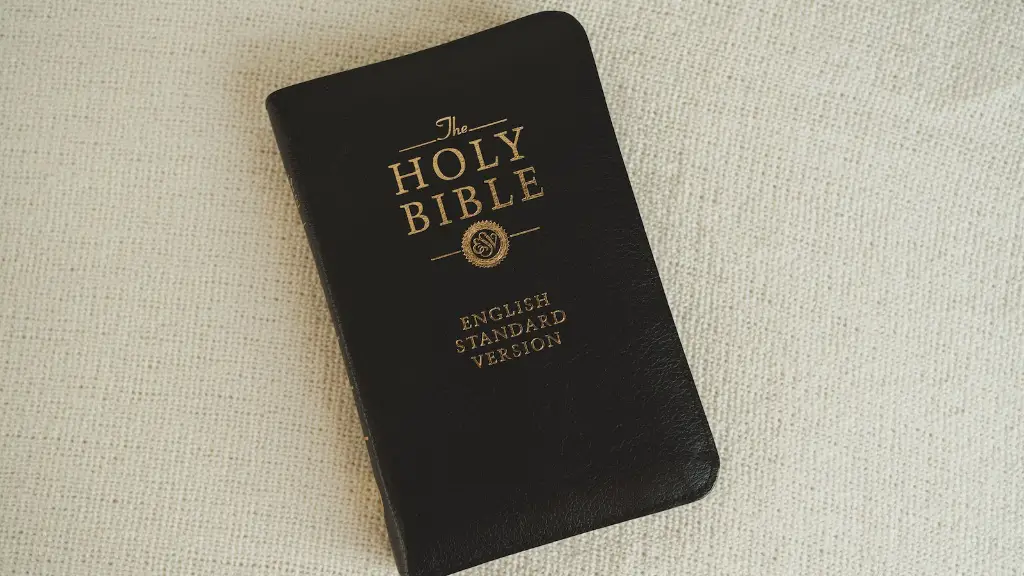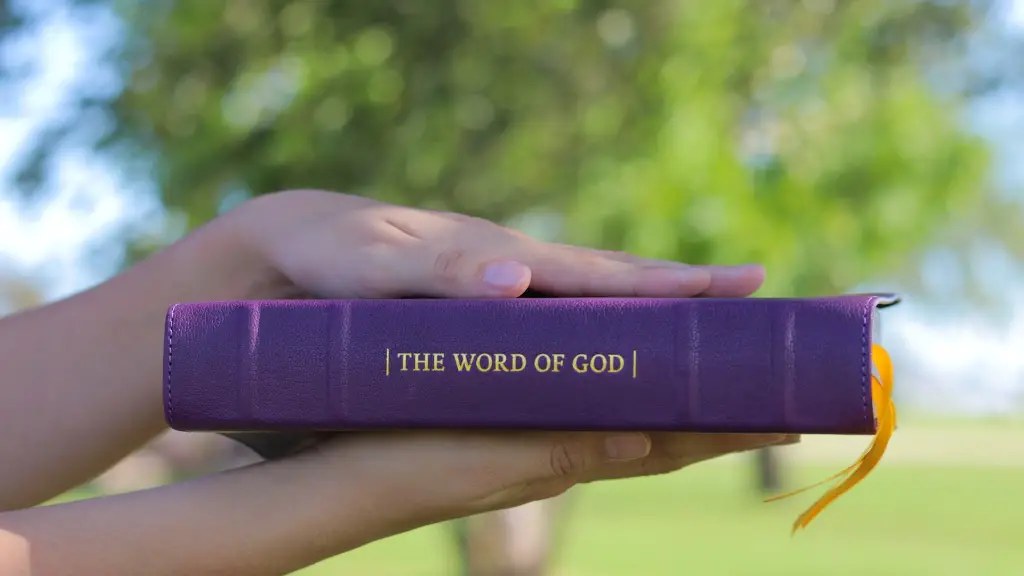What is the mark of the beast in the Bible? It’s a phrase that is often talked about in relation to the Bible, and many people have their own opinions on the matter. But, what exactly is the mark of the beast? In this article, we’ll explore the mark, what it is, and what it means in the Bible.
The term ‘mark of the beast’ originates from the book of Revelation in the New Testament. It is described as a mark that is to be placed on the forehead or hand of those who follow the beast, which is an antichrist figure associated with the end of the world. The mark is seen as a sign of allegiance and devotion to the beast and his way of life. It is thought to be a sign of the coming of the antichrist, a key player in the end times.
Many scholars believe the mark of the beast has a dual meaning, representing both a physical and a spiritual mark. On the physical level, the mark is thought to signify a person’s loyalty to the antichrist or to the false religion and false ways of the antichrist. On the spiritual level, the mark represents being spiritually enslaved to the false teachings and false beliefs of the antichrist.
Evangelical Christian scholars have long held the belief that the mark of the beast is an actual physical mark that will be given to followers of the antichrist when the end times arrive. Some believe it will be a special sign or tattoo, while others believe it could be a computer chip or even a mark on the forehead. Regardless, the mark of the beast is believed to be an indicator of Satan’s control over those who are under his influence.
In the book of Revelation, the mark of the beast is associated with a number, 666. The interpretation of the number is not straightforward, but it is believed to symbolize the attempt of Satan’s followers to supersede God’s will. There is also a belief that the number is connected to the antichrist’s name, representing either his number in terms of his place in the world, or perhaps his place in the alphabet.
The mark of the beast is a controversial topic, and opinions vary widely. Those who reject the idea of the existence of an antichrist reject the notion of the mark of the beast altogether. Some argue that the mark of the beast is a symbolic representation of evil, implying that those who are associated with the antichrist are bound to the power of evil. On the other hand, some see the mark of the beast as a potential sign of God’s grace, suggesting that those who accept the mark may be those who are saved in the end times.
In the end, the mark of the beast remains a mysterious topic, being shrouded in much debate. Some insist that the mark of the beast is a physical mark that will be given to those who pledge allegiance to the antichrist, while others insist that the mark is simply symbolic of the spiritual enslavement to evil that is associated with the antichrist.
A Look at the Cultural Impact of the Mark
The notion of the mark of the beast has been widely adopted by popular culture, appearing at various points in films, television, literature and even video games. As such, the mark has become deeply entrenched into the cultural mindset, becoming a popular trope that is used to signify danger and evil.
For example, films such as The Omen and The Exorcist make use of the mark as a central motif. In the series, it is used to represent the evil that is present in the world and the power of the supernatural. Similarly, video games like Left 4 Dead and Bioshock make use of the notion of the mark as a representation of evil forces at work in the game.
The cultural references to the mark of the beast have also helped to shape popular opinion of the mark. In many cases, the mark has become associated with satanic cults and other dubious religious practices. What’s more, the notion of the mark of the beast has been used to justify the oppression of certain minority groups, contributing to a hostile and fearful atmosphere.
In recent times, the mark of the beast has also been used in some pop-culture to represent a sense of rebellion. For example, many punk and goth culture subcultures have adopted the notion of the mark as a sign of their non-conformity. In some cases, the mark of the beast is seen as a symbol of refusing to bow to the will of mainstream society.
Eschatology and the Mark
The mark of the beast is closely connected to the concept of eschatology, or the study of the end times. Eschatology is a broad topic, encompassing many different theories about the coming of the antichrist and the ultimate fate of the world. By drawing from various religious traditions, scholars attempt to interpret various beliefs and prophecies regarding the end times.
Within the framework of eschatology, the mark of the beast is seen as an identifying symbol of those who have pledged their loyalty to the antichrist and his agenda. Depending on one’s interpretation of the mark of the beast, it can be seen as either an indicator of spiritual enslavement or an expression of liberation. Those who interpret the mark as enslavement might see it as a symbol of submission to the will of the antichrist, while those who interpret it as liberation might see it as an expression of defiance against the oppressive forces of evil.
In either case, the mark of the beast is a powerful symbol of the tension between good and evil, and the fight between those who seek to follow God’s will and those who seek to follow the will of the antichrist. It is, in essence, a symbol of the ultimate struggle for all humankind.
Competing Interpretations
The interpretation of the mark of the beast is a highly contested topic, pitting scholars against one another in attempting to define what it means and what it represents. Some argue that the mark is a physical mark that will be given to followers of the antichrist, while others argue that the mark has a more symbolic meaning, representing spiritual enslavement to the false teachings of the antichrist.
At its core, the debate centers on two sides: those who argue for a literal interpretation of the mark of the beast, and those who believe that the mark is symbolic. On the one hand, those who hold to the literal interpretation insist that the mark of the beast is a physical mark that must be given to those who follow the antichrist. On the other hand, those who believe the mark is a symbolic representation argue that the mark is merely an expression of spiritual enslavement, representing the oppression that comes with following the teachings of the antichrist.
The debate over the mark of the beast has been raging for centuries. For many, the true meaning of the mark remains shrouded in mystery. Some argue that the mark is an actual physical mark, while others argue that the mark is a symbol of spiritual enslavement. Whatever the case may be, one thing is certain: the mark of the beast is synonymous with the evil and oppression associated with the antichrist.
Spiritual Significance of the Mark
In addition to the various debates over its interpretation, the mark of the beast also has spiritual significance. Many argue that the mark of the beast represents a spiritual agreement between the antichrist and those who follow him. By accepting the mark, those who follow the antichrist become enslaved to his false teachings, essentially cutting themselves off from the will of God.
At its heart, the mark of the beast is seen as a spiritual sign of the coming end times, a warning to all humankind that the battle between evil and good is looming. By accepting the mark of the beast, those who follow the antichrist have essentially chosen the forces of evil over the will of God, essentially damning themselves to a future of suffering and oppression.
For those who choose to remain faithful to God and His will, the mark of the beast serves as a reminder of the dangers of abandoning God’s path. It is a reminder that those who are not loyal to God’s will may be susceptible to the temptations of the antichrist and his minions, and choosing to follow them could lead to spiritual enslavement.
The Role of Faith in Understanding the Mark
In the end, the true meaning of the mark of the beast remains a mystery. Some argue that the mark of the beast is a literal mark that must be given to the followers of the antichrist, while others argue that the mark is symbolic of spiritual enslavement. Ultimately, the interpretation of the mark of the beast is deeply rooted in one’s faith in God and His will.
At its core, the mark of the beast is a symbol of the spiritual battle between good and evil. It is a reminder that choosing to follow the will of God is the only way to protect oneself from the enslavement of the antichrist and his minions. For those who hold strong to the will of God, the mark of the beast is a reminder of His ultimate power and of the dangers of straying from His path.
For believers, the mark of the beast is a powerful symbol of faith and devotion to God. It is a reminder that, through faith in God and His will, one can conquer the evil of the antichrist and protect oneself from the spiritual enslavement of the end times.
The Role of the Church in Interpreting the Mark of the Beast
For those who have faith, the church plays a significant role in the interpretation of the mark of the beast. Through the teachings of the Christian faith, believers are able to gain a better understanding of the true meaning of the mark and the danger that it symbolizes. By seeking guidance from the church, believers are better equipped to make decisions that are in keeping with God’s will and to protect themselves from the spiritual bondages of the antichrist.
For many, the role of the church in the interpretation of the mark of the beast is invaluable. Through its teachings, the church is able to provide believers with a greater understanding of the spiritual battle between good and evil and the importance of protecting oneself from the enslavement of the antichrist. With this understanding, believers are better able to lead lives that are faithful to God and devoted to His will.
The mark of the beast is a powerful symbol of the spiritual battle between good and evil, and one that is shrouded in much mystery and debate. What it ultimately represents, however, is a matter of faith and of interpretation. With the help of the church, those who have faith can better understand the true meaning of the mark and the dangers it symbolizes, arming them with the knowledge they need to remain devoted to God’s will and to protect themselves from the bondage of the antichrist.





